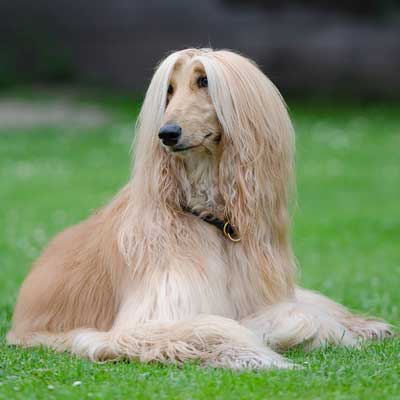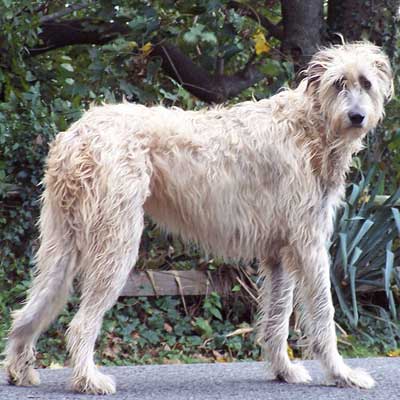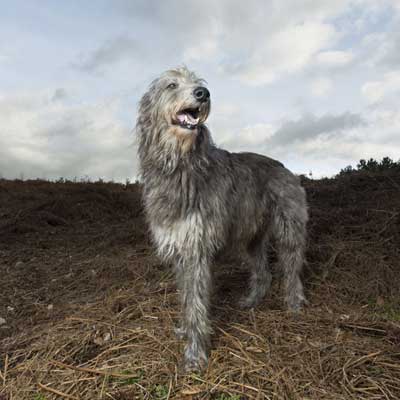Afghan Hound
Smart and resistant, he is unbelievably careful with children
The first Afghans arrived in Britain in the early 1900s and one, called Zardin, won in spectacular style at the 1907 Crystal Palace show in London.The breed is also known as the Tazi, supporting its resemblance to a Russian breed of that name. One of the typical sighthounds of the world, the Afghan - who, as his name implies, comes from the mountains of Afghanistan - is a hunter and will chase if given opportunity.Nowadays also a glamorous show dog which must combine strength and dignity with a long, silky coat as well as having an Oriental expression.
-
Head - cranial region
Skull: Long, not too narrow with prominent occiput. Well balanced and mounted by a long “top-knot”.
Stop: Slight. -
Head - Facial region
Nose: Preferably black, liver permissible in light-coloured dogs.
Muzzle: Long, with punishing jaws.
Jaws / Teeth: Jaws strong, with a perfect, regular and complete scissor bite, i.e. the upper teeth closely overlapping the lower teeth and set square to the jaws. Level bite (pincer bite, edge to edge) tolerated.
Eyes: Dark for preference, but golden colour not debarred. Nearly triangular in appearance, slanting slightly upwards from inner corner to outer corner.
Ears: Set low and well back, carried close to head. Covered with long silky hair. -
Neck
Long, strong with proud carriage of head. -
Body
Back: Level, moderate length, well-muscled.
Loin: Straight, broad and rather short.
Croup: Falling slightly away to stern. Hipbones rather prominent and wide apart.
Chest: A fair spring of ribs and good depth. -
Tail
Not too short. Set on low with ring at end. Raised when in
action. Sparsely feathered. -
Forequarters
Shoulder: Long and sloping, set well back, well-muscled and strong without being loaded.
Upper arm: Long and sloping.
Elbow: In profile vertically below the withers. Close to rib cage, turning neither in nor out.
Forearm: Forelegs straight and well boned.
Metacarpus (Pastern): Long and springy. -
Hindquarters
General appearance: Powerful. Great length between hip and hock, with comparatively short distance between hock and foot.
Stifle (Knee): Well bent and well turned. -
Feet
Forefeet: Strong and very large both in length and breadth, and covered with long, thick hair; toes arched. Pads well down on ground.
Hind feet: Long, but not quite as broad as forefeet; covered with long thick hair; toes arched. Pads well down on ground. -
Gait / Movement
Smooth and springy with a style of high order. -
Coat / Hair
Hair: Long and very fine texture on ribs, fore and hindquarters and flanks. In mature dogs from shoulder backwards and along the saddle, hair short and close.
Hair long from forehead backwards, with a distinct silky “top-knot “. On the foreface hair short.
Ears and legs well coated. Pasterns can be bare. Coat must develop naturally.
Any evidence of clipping or scissoring should be penalized. -
Coat - colour
All colours acceptable however white markings on the
head or collar are highly undesirable. -
Size
Ideal height at the withers:
Males: 68 – 74 cms.
Females: 63 – 69 cms. -
Faults
Any departure from the foregoing points should be
considered a fault and the seriousness with which the fault should be regarded should be in exact proportion to its degree and its effect upon the health and welfare of the dog.






